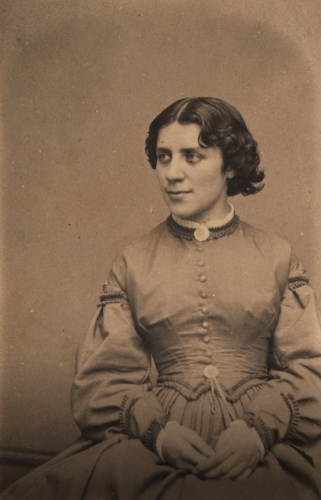
Mathew B. Brady, Portrait of Anna Elizabeth Dickinson, c. 1863. National Portrait Gallery, Smithsonian Institution; gift of Laurie A. Baty.
To usher in the centennial anniversary of women's suffrage in the United States, the National Portrait Gallery is opening a major exhibition highlighting the women who changed history by advocating for the right to vote.
Votes for Women: A Portrait of Persistence, opening March 29, will feature more than 120 portraits and objects spanning 1832 to 1965 that explore the American suffrage movement and the political challenges women faced.
Curated by National Portrait Gallery historian Kate Clarke Lemay, the exhibition is a centerpiece of the Smithsonian American Women's History Initiative. It outlines the more than 80-year movement for women to obtain the right to vote as part of the larger struggle for equality that continued through the 1965 Civil Rights Act and arguably lingers today.
"This exhibition aims to place women's suffrage at the forefront of American history as the movement reveals the complex contours of American character, including persistence," Lemay said. "'Votes for Women' is as much a study of the Constitution as it is a long social history of the activism of largely forgotten women. The exhibition combines portraiture and biography to convey the stories of individuals who challenged norms to place women's empowerment at the center of America's promise of equality for all."
On view will be portraits of the movement's pioneers, notably Susan B. Anthony and abolitionist Sojourner Truth, and 1848 Seneca Falls participants, including Elizabeth Cady Stanton and Lucy Stone.
Other portraits will represent figures such as Victoria Woodhull, the first woman to run for President; Carrie Chapman Catt, who devised successful state-by-state persuasion efforts; Alice Paul, who organized the first-ever march on Washington, D.C.'s National Mall; and Anna Elizabeth Dickinson (pictured), who started advocating for abolition and women's rights at 14 years old.
Votes for Women: A Portrait of Persistence will also shed light on the racial struggles of the suffrage movement and how African American women, often excluded by white women from the main suffrage organizations, organized for citizenship rights (including the right to vote).
Portraits of African American contributors to the movement include Sarah Remond, who filed one of the earliest lawsuits protesting race segregation; Ida B. Wells, who advocated for federal laws against lynching; and Mary Church Terrell, who established the National Association of Colored Women.
The exhibition runs through Jan. 5, 2020.